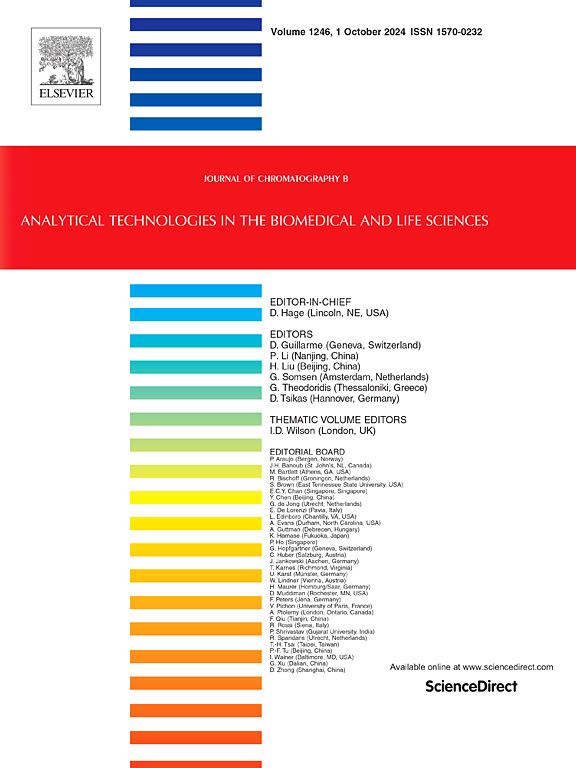HPLC analysis of gingerols and shogaols discriminated from ginger extracts with a diode array detector
IF 2.8
3区 医学
Q2 BIOCHEMICAL RESEARCH METHODS
引用次数: 0
Abstract
A simple and inexpensive high performance liquid chromatography (HPLC) method for the analysis of gingerols and shogaols in ginger extracts discriminated with a diode array detector (DAD) has been developed. The ginger extracts were well separated with a linear gradient elution from mixed solvents of water and methanol to methanol within 30 min by using different C18 columns. The separated components were detected with a DAD. The gingerols and shogaols were discriminated from other components based on their same chromophore, which differs from other components. These components can be accurately and quantitatively analyzed contrast to the quality control method,INA method 114.000,which has severe separation and peak identification problems. Different samples prepared by solvent extraction and supercritical carbon dioxide extraction were analyzed by using our developed HPLC-DAD method. This method is quite promising for origin analysis of ginger rhizome slices with overlapped chromatograms of different detection wavelength.
用二极管阵列检测器高效液相色谱法分析生姜提取物中姜辣素和姜酚的鉴别
建立了一种简单、廉价的高效液相色谱法(HPLC),用二极管阵列检测器(DAD)鉴别生姜提取物中的姜辣素和姜酚。采用不同的C18柱,从水和甲醇混合溶剂中线性梯度洗脱至甲醇,分离时间为30 min。用DAD检测分离组分。姜辣素和姜辣素具有相同的发色团,与其他成分区别开来。与质量控制方法INA方法114.000相比,这些成分可以准确定量地分析,但INA方法存在严重的分离和峰识别问题。采用HPLC-DAD方法对溶剂萃取和超临界二氧化碳萃取制备的不同样品进行分析。该方法在不同检测波长的重叠色谱分析中具有较好的应用前景。
本文章由计算机程序翻译,如有差异,请以英文原文为准。
求助全文
约1分钟内获得全文
求助全文
来源期刊

Journal of Chromatography B
医学-分析化学
CiteScore
5.60
自引率
3.30%
发文量
306
审稿时长
44 days
期刊介绍:
The Journal of Chromatography B publishes papers on developments in separation science relevant to biology and biomedical research including both fundamental advances and applications. Analytical techniques which may be considered include the various facets of chromatography, electrophoresis and related methods, affinity and immunoaffinity-based methodologies, hyphenated and other multi-dimensional techniques, and microanalytical approaches. The journal also considers articles reporting developments in sample preparation, detection techniques including mass spectrometry, and data handling and analysis.
Developments related to preparative separations for the isolation and purification of components of biological systems may be published, including chromatographic and electrophoretic methods, affinity separations, field flow fractionation and other preparative approaches.
Applications to the analysis of biological systems and samples will be considered when the analytical science contains a significant element of novelty, e.g. a new approach to the separation of a compound, novel combination of analytical techniques, or significantly improved analytical performance.
 求助内容:
求助内容: 应助结果提醒方式:
应助结果提醒方式:


